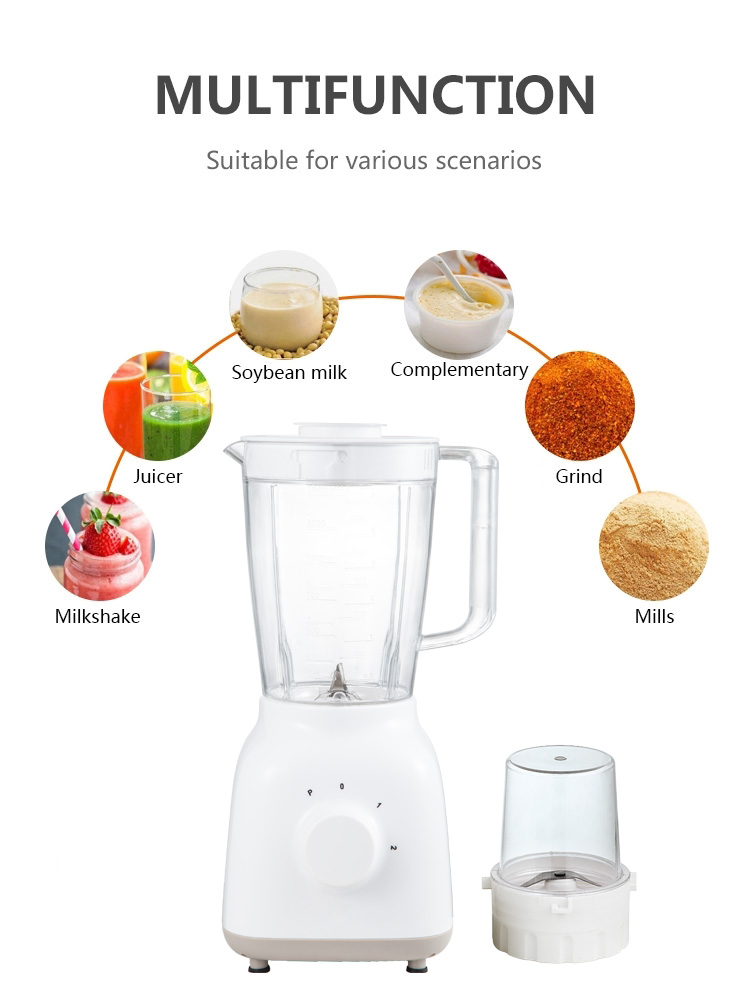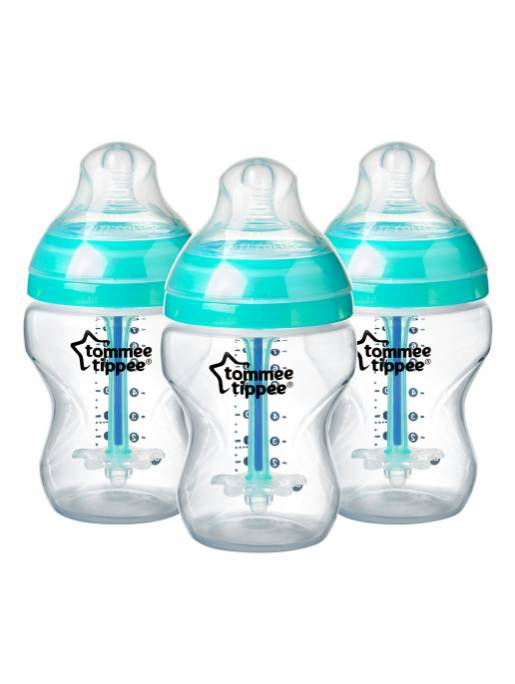Feeding stages of a baby
How much should my baby eat? A guide to baby food portions
- Community
- Getting Pregnant
- Pregnancy
- Baby Names
- Baby
- Toddler
- Child
- Health
- Family
- Courses
- Registry Builder
- Baby Products
Advertisement
Wondering how much to feed your baby? This can be hard to figure out, especially when you're starting solids and most of your baby's food ends up on your little one or the floor. It's also difficult to determine how much an 8-month-old (or older baby) should eat – babies this age are more interested in solid foods but still get most of their nutrition from breast milk or formula. This visual guide to baby food portions can help you figure out how much your baby should eat at every stage.
Photo credit: Karla Martin for BabyCenter
How much should my baby eat?
Do you worry that your baby is eating too little or too much? Your baby will self-regulate her food intake based on what their body needs, so let their appetite be your guide.
It's helpful to have a reference point, however. Here are photos of how much solid food a baby typically eats in a day. You can also ask your baby's doctor for feeding advice.
This visual guide shows:
- Portions for infants who are new to solids (typically 4 to 6 months)
- Two sample meals for a younger baby (6 to 8 months)
- Three sample meals and two snacks for an older baby (8 to 12 months) from a menu developed by the American Academy of Pediatrics (AAP)
Your little one may eat less or more than what's shown here. Your job is to provide a variety of healthy foods at regular intervals without pressure, and their job is to decide what and how much to eat.
Photo credit: iStock.com / UntitledImages
Watch for signs your baby is full
Lots of factors – including activity level, growth spurts or plateaus, illness, and teething – will affect your baby's appetite, which can vary daily.
End feeding when they signal that they're done. Signs of being full include:
Signs of being full include:
- Turning their head away
- Refusing to open their mouth for another bite after they've swallowed (resist the urge to encourage your baby to have one last spoonful)
- Leaning back in their chair
- Playing with the spoon or food rather than eating
Photo credit: Karla Martin for BabyCenter
How much a 4- to 6-month-old should eat
When your baby is developmentally ready for solids, typically around 4 to 6 months, talk to their doctor about introducing solid foods. The first bites are mostly about them getting used to the idea of having something different in their mouth.
- Start with a very small amount, 1 to 2 teaspoons, of a single-ingredient puree.
- Gradually increase to 1 to 2 tablespoons of food once a day.
- Follow your baby's fullness cues.
Popular first foods include pureed mango, banana, chicken, turkey, beef, peas, sweet potatoes, and infant cereal. It's up to you what food to start with, but wait 3 to 5 days between introducing each new food to make sure your baby doesn't have an allergic reaction or food intolerance. (And remember, no cow's milk or honey until age 1.)
It's up to you what food to start with, but wait 3 to 5 days between introducing each new food to make sure your baby doesn't have an allergic reaction or food intolerance. (And remember, no cow's milk or honey until age 1.)
Photo credit: Karla Martin for BabyCenter
How much a 6- to 8-month-old should eat
As your little one gets more comfortable with solids, you can increase the frequency of meals and variety of food.
- Transition from one to two meals a day, typically by 8 months.
- Over time, add a second food to each meal. The photo above is an example of a meal with two foods.
- Once you've worked up to two meals with two foods each, aim for a balance of proteins, vegetables, fruits, and grains in their daily diet.
- Whenever you introduce a new food, start with a very small amount, a teaspoon or two, to allow your baby to get used to its flavor and texture.
- Start with a soupy consistency. Gradually add more texture as their eating skills improve.
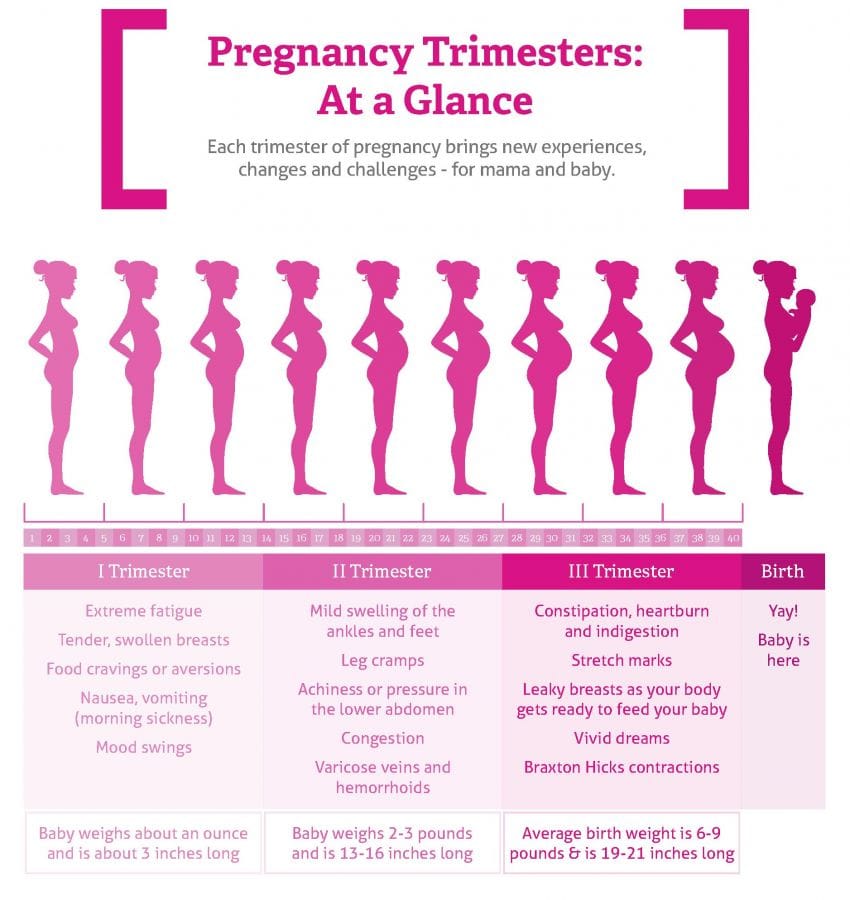
Expect their intake of breast milk or formula to go down. They'll start drinking less of it as they eat more solid foods. Provide healthy options at mealtimes, and let them choose how much to eat.
Note: The jars in all photos are standard 4-ounce baby food jars.
Photo credit: Karla Martin for BabyCenter
Breakfast for a younger baby (6 to 8 months)
Cereal and fruit make an easy combination for a morning meal.
Grain: Iron-fortified, whole-grain infant cereal is a popular first grain. At 6 months, a typical daily portion of infant cereal mixed with breast milk or formula might be 2 to 3 tablespoons, increasing to 4 to 8 tablespoons (1/4 to 1/2 cup) by 8 months. (It's best to avoid rice cereal, though.)
Fruit: Babies love the natural sweetness of fruits like pears, apples, berries, prunes, and stone fruits. Between 6 and 8 months, a baby will typically transition from about 2 to 3 tablespoons of fruit puree a day to 4 to 8 tablespoons (1/4 to 1/2 cup) of mashed or minced fruit.
Photo credit: Karla Martin for BabyCenter
Dinner for a younger baby (6 to 8 months)
If you serve a grain and fruit in the morning, consider offering a protein-rich food and vegetable later in the day. Your child may eat more or less than the amounts shown.
Protein: A baby might transition from eating 1 to 2 tablespoons of meat puree at 6 months to 2 to 4 tablespoons at 8 months, for example. Other good protein sources include cheese, unsweetened plain whole-milk yogurt, tofu, beans, and lentils.
Vegetables: Between 6 and 8 months, a baby will typically transition from about 2 to 3 tablespoons of vegetable puree a day to 4 to 8 tablespoons (1/4 to 1/2 cup). Try classic favorites like carrots, spinach, or butternut squash, as well as less traditional first foods such as parsnips, beets, or asparagus.
As your child's eating skills improve, gradually add more texture by dicing or mincing foods.
Photo credit: Karla Martin for BabyCenter
How much an 8- to 12-month-old should eat
By 8 months or so, your baby is likely getting the hang of eating and needs to eat more calories to support their growing body. But since their little belly can't hold a lot of food, they'll need to eat more often. Every baby is different, but this may be a good time to try offering a third solid food meal.
But since their little belly can't hold a lot of food, they'll need to eat more often. Every baby is different, but this may be a good time to try offering a third solid food meal.
During this period:
- Continue to give your baby breast milk or formula.
- Add morning and afternoon snacks. (Some babies this age are happy with breast milk or formula as their snack, while others gravitate toward solid foods.) Once you've added a third meal and snacks, your baby will be eating or drinking something about every two to three hours.
- Continue to aim for a mix of proteins, vegetables, fruits, and grains.
- Introduce coarser and chunkier textures, for example, by dicing or mincing food instead of pureeing it, and graduate to soft finger foods as your baby's eating skills improve.
- Avoid foods with added sugars. Check the Nutrition Facts label on packaged foods, and try to steer clear of foods that list 1 gram or more of "Added Sugars.
 "
" - Provide healthy options, and let your baby choose how much to eat.
To visualize daily portions for an 8- to 12-month-old, check out the following photos of a typical day's menu for a baby this age, developed by the AAP.
Your child may eat more or less than these amounts. If you're concerned about how much your baby is eating, talk to their doctor for advice.
Photo credit: Karla Martin for BabyCenter
Breakfast for an older baby (8 to 12 months)
The AAP sample menu for a baby 8 to 12 months features a breakfast consisting of:
- 4 to 8 tablespoons (1/4 to 1/2 cup) whole-grain infant cereal mixed with formula or breast milk
- 4 to 8 tablespoons (1/4 to 1/2 cup) diced fruit
Note: This is an example. Your baby may eat different foods and amounts.
Photo credit: Karla Martin for BabyCenter
Morning snack for an older baby (8 to 12 months)
The AAP sample menu for a baby 8 to 12 months features a morning snack consisting of:
- 4 tablespoons (1/4 cup) diced cheese or cooked vegetables
Note: This is an example of a morning snack, which babies typically add sometime between 8 and 12 months. Your baby may eat different foods and amounts.
Your baby may eat different foods and amounts.
Photo credit: Karla Martin for BabyCenter
Lunch for an older baby (8 to 12 months)
The AAP sample menu for a baby 8 to 12 months features a lunch consisting of:
- 4 to 8 tablespoons (1/4 to 1/2 cup) unsweetened plain whole-milk yogurt or cottage cheese, or minced meat
- 4 to 8 tablespoons (1/4 to 1/2 cup) diced or mashed yellow or orange vegetable
Note: This is an example. Your baby may eat different foods and amounts.
Photo credit: Karla Martin for BabyCenter
Afternoon snack for an older baby (8 to 12 months)
The AAP sample menu for a baby 8 to 12 months features an afternoon snack consisting of:
- 4 tablespoons (1/4 cup) diced fruit or unsweetened plain whole-milk yogurt
- 1 whole-grain teething biscuit or cracker
Note: This is an example of an afternoon snack, which babies typically add sometime between 8 and 12 months.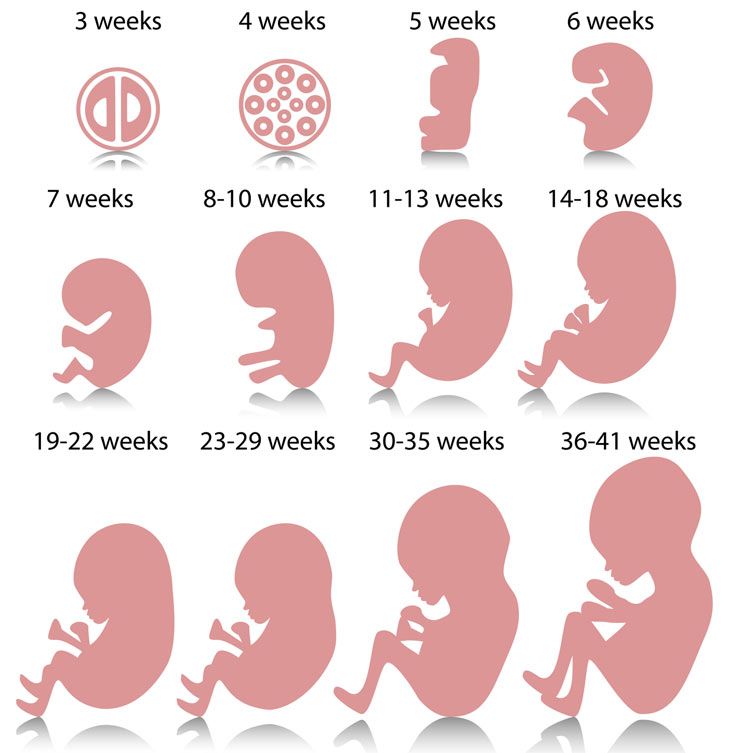 Your baby may eat different foods and amounts.
Your baby may eat different foods and amounts.
Photo credit: Karla Martin for BabyCenter
Dinner for older baby (8 to 12 months)
The AAP sample menu for a baby 8 to 12 months features a dinner consisting of:
- 4 tablespoons (1/4 cup) minced or ground poultry or meat, or diced tofu
- 4 to 8 tablespoons (1/4 to 1/2) cup diced, cooked green vegetable
- 4 tablespoons (1/4 cup) noodles, pasta, rice, or potato
- 4 tablespoons (1/4 cup) diced fruit
Note: This is an example. Your baby may eat different foods and amounts.
Photo credit: Karla Martin for BabyCenter
How much should my baby drink once they start eating solids?
Breast milk or formula will fully meet your child's hydration needs until they're about 6 months old. They may start drinking less as solid foods become a bigger part of their diet. Here are typical daily amounts by age – your baby's intake may be different, however.
6 to 8 months: 24 to 32 ounces of formula, or continued breastfeeding on demand
8 to 12 months: 24 ounces of formula, or continued breastfeeding on demand
Water: You can offer your baby water once they start eating solids, but let them self-regulate how much they drink. The Centers for Disease Control and Prevention (CDC) recommends giving babies who are 6 to 12 months old 4 to 6 ounces of water a day, but what your baby decides to drink may vary. They may drink more on a hot day, for example.
Avoid juice: Juice isn't recommended for babies younger than 12 months.
Photo credit: iStock.com / SDI Productions
Your baby has the final say
Keep in mind that these portions are an estimate. The truth is, every baby is different, and there's no set amount of food that's appropriate for every baby at every stage.
If you're worried about whether your baby is eating enough – or too much – the best advice is to look for and respond to signs that your baby is full.
Your baby's doctor will chart their weight gain at regular intervals. If the doctor sees a consistent growth curve and doesn't have other concerns, your baby is most likely eating the right amount of food.
Hungry for more?
Age-by-age guide to feeding your baby
The 10 best foods for babies
The worst foods for babies
Using spices and seasoning in baby food
Was this article helpful?
Yes
No
Elizabeth Dougherty
Elizabeth Dougherty is a veteran parenting writer and editor who's been contributing to BabyCenter since 2015. She's an intrepid traveler, devoted yogi, and longtime resident of Silicon Valley, where she lives with her husband and son.
Advertisement | page continues below
Advertisement
What is baby-led weaning and what foods are best for it?
Baby-led weaning is a way to introduce solid foods to babies. Instead of spoon-feeding baby cereal and purees, parents skip straight to finger foods and let their baby feed themself. The best foods for baby-led weaning are large pieces of soft foods that are easy to grab and chew, like banana spears, baked apple slices, thin slices of toast, and soft-cooked meat. There isn't much research on the benefits and drawbacks of baby-led weaning, so talk to your pediatrician to see if it's a good fit for your baby.
The best foods for baby-led weaning are large pieces of soft foods that are easy to grab and chew, like banana spears, baked apple slices, thin slices of toast, and soft-cooked meat. There isn't much research on the benefits and drawbacks of baby-led weaning, so talk to your pediatrician to see if it's a good fit for your baby.
Baby-led weaning (BLW) is a method for starting your baby on solids. Instead of spoon-feeding them mushy cereals and purees, you put large chunks of soft food directly on the highchair tray or table, and let your baby grab the food and feed themself. It's called "baby-led" because you let your baby pick up the food and eat at their own pace, instead of controlling how much and how quickly they eat.
Just as with traditional spoon-feeding, your baby will continue to get most of their nutrition from breast milk or formula until they get used to eating solid food (usually around their first birthday).
Check out our videos to see how it's done:
- Baby-led weaning: Signs your baby is ready
- Baby-led weaning: Getting started
- Baby-led weaning: 9 great finger foods
- Baby-led weaning: Is gagging normal?
When to start baby-led weaning
Most babies are ready to start BLW when they're about 6 months old, though some may need more time. Your baby will give you a few signs they're ready for solid foods: If they can sit up without support, can grab and put objects in their mouth, and open their mouth when food is offered, they're probably ready to begin exploring table foods.
Your baby will give you a few signs they're ready for solid foods: If they can sit up without support, can grab and put objects in their mouth, and open their mouth when food is offered, they're probably ready to begin exploring table foods.
Keep in mind that BLW may not be right for babies with special needs or babies who are unable to pick up and chew food on their own. Talk with your baby's doctor before trying BLW, especially if:
- Your baby has special needs and can't chew very well.
- Your baby has difficulty picking up food and moving it to their mouth.
- Your baby was born prematurely. Premature babies have an adjusted developmental milestone schedule, so they may not be ready for solid food at 6 months – and they have different caloric needs in their first year.
How to start baby-led weaning
If your baby shows signs of readiness and their doctor says it's okay to try BLW, here are some tips for getting started:
- It will take your baby time to learn to eat solids, and in the meantime, they'll still be getting their nutrition primarily from breast milk or formula.
 BLW sessions can focus on fun and exploration. If your baby's hungry, it might be best to give them a bottle or nurse them before offering solid food, so they don't get frustrated.
BLW sessions can focus on fun and exploration. If your baby's hungry, it might be best to give them a bottle or nurse them before offering solid food, so they don't get frustrated. - BLW can be messy! Manage the mess with a large bib or smock. Placing a mat under your baby's highchair can make for easier cleanup, too.
- Make sure you or another adult is always watching carefully during meals and knows what to do if your baby starts choking. As long as you're watching them, BLW doesn't create a higher risk of choking.
- When it's time to feed your baby, sitting upright in a highchair, not leaning back, is the safest choice.
- Offer your baby soft or well-cooked food cut into sticks or strips that are at least as long as their fist, not bite-size pieces. They'll likely try to hold the food in their fists and smash it into their mouth at first. Over time, they'll learn to grip the food between their thumb and forefinger.
- Don't offer your baby foods that can be choking hazards, like nuts, grapes, popcorn, and foods cut into coins, including sausages and hot dogs.

- Make sure your baby's food passes the "squish test" by checking whether you can squish it on the roof of your mouth with your tongue. That means no raw vegetables and no hard, raw fruit (such as apples) or citrus fruit (unless each segment is peeled). The exception is pieces of food that are large and fibrous enough that small pieces don't break off when sucked or chewed. For example, soft-cooked meat is okay, but cheese sticks are not.
- Put food directly on the highchair tray or table in front of your baby. (Bowls and plates will just end up on the floor.)
- Introduce new foods one at a time. Just as with spoon-feeding, wait three to five days after introducing a new food before trying the next one. That way, if your baby has an allergic reaction, you'll know which food probably caused it.
- Eat as a family whenever possible. Babies learn to eat by observing and imitating other family members. Family mealtimes can also help your baby feel like part of the group.

Advertisement | page continues below
As with many other parenting approaches, what works for some families won't necessarily work for yours. Some families strictly follow the BLW approach, while others do a combination of BLW and spoon-feeding. For example, you could spoon-feed your baby purees and mashed food sometimes, but allow them to feed themself finger foods (like the ones listed below) at other times.
Good baby-led weaning foods
Some foods that are good to use with BLW include:
- Well-cooked vegetable sticks, including steamed carrots, zucchini, sweet potatoes, and beets
- Food with interesting shapes and textures, such as steamed broccoli and cauliflower florets, and slices of ripe avocado
- Soft, ripe fruits, including banana, papaya, pear, kiwi, melon, and soft-cooked apple
- Large strips of poached chicken or fully cooked steak. Babies won't be able to chew and swallow meat like steak, but they can gnaw and suck on it to get the flavor.

- Whole-grain or vegetable pasta in a shape that's easy to grab, like fusilli or penne
- Rice rolled into balls
- Lentil patties
- Salt-free rice cakes
- Pieces of tofu
As your baby progresses, they can start learning to dip their food chunks into hummus, unsweetened yogurt, and guacamole.
Gagging and choking in baby-led weaning
One concern about giving babies whole food to eat is whether 6-month-old babies are developmentally ready to chew and swallow chunks of food and whether these chunks – even when they're soft – are choking hazards.
Research suggests that baby-led weaning isn't associated with a greater risk of choking. As long as you're watching your baby while they eat and giving them easy-to-eat foods, baby-led weaning is safe.
Whether they're being spoon-fed or feeding themselves, many babies gag when they first start solids, and this can be disconcerting or even frightening.
Gagging is a normal reflex babies have as they learn to eat solids. Gagging brings food forward inside your baby's mouth so they can chew it more or try to swallow a smaller amount. As they get more experience with solid food, your baby will gag less often.
Gagging brings food forward inside your baby's mouth so they can chew it more or try to swallow a smaller amount. As they get more experience with solid food, your baby will gag less often.
It's also normal for babies to gag as they get used to new flavors and textures. If your baby gags a lot, remember it's a temporary stage that your baby will get through. (If your baby's gagging doesn't improve on its own, talk with their doctor. There are some babies who need feeding therapy, usually with a speech therapist or occupational therapist.)
Here's how to recognize the difference between gagging and choking:
- A child who is gagging may push their tongue forward or out of their mouth and do a retching movement to try to bring food forward. Their eyes may water. They may cough or even vomit. Let your child continue to cough because that's the most effective way to resolve the problem.
- A child who is choking is unable to cry, cough, or gasp.
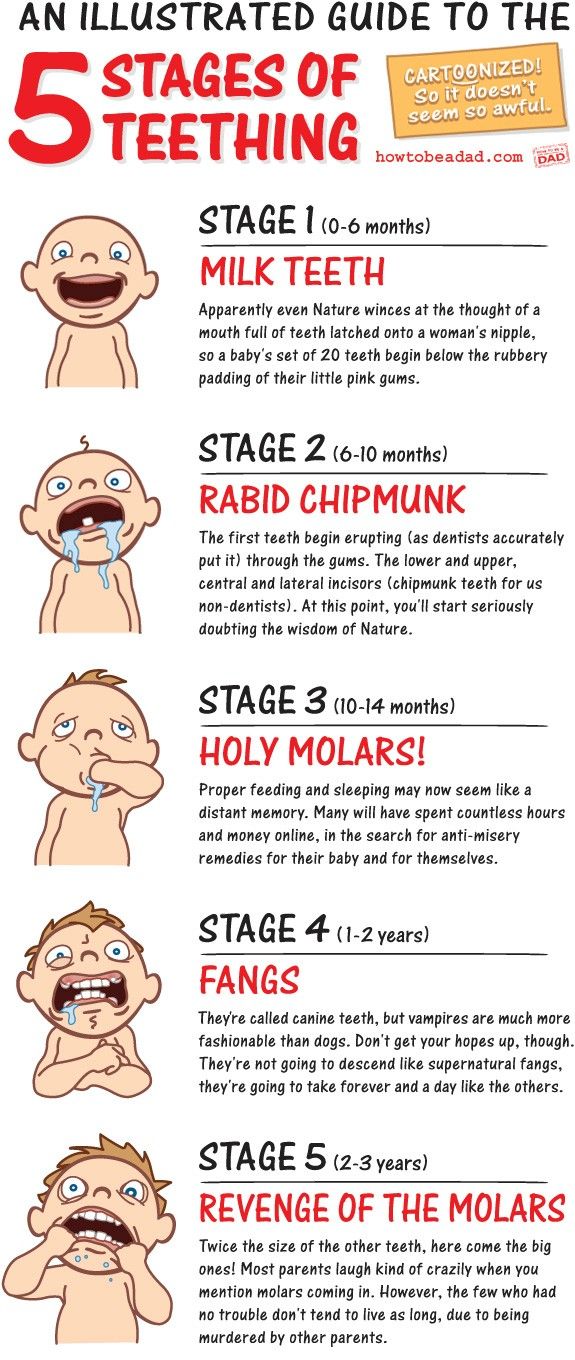 They may make odd noises or no sound at all while opening their mouth. You may need to do back blows or chest thrusts to dislodge the blockage. It's a good idea to take an infant first aid class so you know what to do if your baby chokes.
They may make odd noises or no sound at all while opening their mouth. You may need to do back blows or chest thrusts to dislodge the blockage. It's a good idea to take an infant first aid class so you know what to do if your baby chokes.
The pros and cons of baby-led weaning
Many experts say more research is needed on baby-led weaning, but some studies have found it may have the following benefits:
- Healthy eating: Since babies feed themselves, BLW allows them to learn how to listen to their hunger cues and stop eating when they aren't hungry anymore, rather than relying on their parents to tell them when to stop eating. This may produce healthier eaters. Allowing babies to explore different food flavors and textures may make them more adventurous eaters who are more likely to eat a broad range of foods as they grow up.
- Skill development: By trying to grasp and eat chunks of food, infants practice fine motor skills.
 BLW allows babies to practice eye-hand coordination and picking up pieces of food using the pincer grasp.
BLW allows babies to practice eye-hand coordination and picking up pieces of food using the pincer grasp. - Can be easier for parents: Though you still need to supervise your baby closely, you won't need to spoon-feed your baby with BLW. Your baby can be part of your family's regular dinnertime flow.
There are also potential downsides to baby-led weaning. Some researchers are concerned about:
- Low calorie intake: Because babies are responsible for moderating their own eating, and because young babies aren't very experienced at feeding themselves, they may not eat as much food in their early months of BLW compared to spoon-feeding.
- Nutritional deficiencies: BLW babies may end up deficient in iron, especially if they don't drink formula, because they don't get the iron-fortified cereal that spoon-fed babies are often given.
It takes babies a while to get used to solid food. To ensure adequate nutrition, continue breastfeeding or bottle-feeding your baby during their first year, even after they start eating solid food. (Your baby's main source of nutrients will be breast milk or formula until they're about a year old.) As they learn to eat solid food, they'll need less breast milk or formula.
(Your baby's main source of nutrients will be breast milk or formula until they're about a year old.) As they learn to eat solid food, they'll need less breast milk or formula.
If you're not sure how much your baby needs to eat and when, check out our age-by-age guide to feeding.
Your baby's doctor will keep track of your baby's growth at well-child visits, so talk with them if you're concerned about how much your baby eats or weighs.
What is baby-led feeding?
Baby-led feeding is often just another name for baby-led weaning. "Weaning" has different meanings in different places – in the United Kingdom, where baby-led weaning started, it refers to the process of introducing solid foods to your baby. But in the United States, it most often refers to ending breast- or bottle-feeding.
Because of that, baby-led weaning is sometimes referred to as "baby-led feeding" in the U.S.
For some, the terms are synonymous. For others, though, baby-led feeding is the unofficial name of a slightly different approach that blends traditional spoon-feeding and baby-led weaning techniques. That might mean offering purees when it's easier and faster, like at daycare or when your family is on the go, and then allowing your baby to eat soft table foods and finger foods at home. This method is also sometimes called modified baby-led weaning.
That might mean offering purees when it's easier and faster, like at daycare or when your family is on the go, and then allowing your baby to eat soft table foods and finger foods at home. This method is also sometimes called modified baby-led weaning.
Baby-led weaning tips
There's no official guidance from the American Academy of Pediatrics (AAP) on baby-led weaning, but many experts say it's safe as long as your baby is developmentally ready to start eating solids. Here are some tips from experts on using BLW:
- Be flexible and be willing to use whatever method works best for your child.
- Make sure the food is developmentally appropriate for your child.
- Food for 6-month-olds doesn't need to be pureed, but it should be the texture, consistency, and size that the child can handle.
- Stay nearby and watch your child eat.
- Be mindful of choking hazards – don't give your baby big globs of sticky foods like peanut butter or hard foods like raw carrots and apples.

- Offer a food several times before deciding your baby doesn't like it. Sometimes, it just takes a little while for your baby to get used to a new flavor or texture.
And here are some comments on BLW from parents who used the method and liked it:
"[Baby-led weaning was] one of the best decisions we made with our daughter. She's a fantastic eater and eats a great variety of food. I also believe it made her a great restaurant eater. We always got compliments on how well-behaved she was, and people were always shocked to see a 7-month-old feeding herself in a restaurant."
— Michele
"BLW worked great for us. I have never felt that because of BLW my son wasn't eating healthy foods. In fact, I thought the opposite because he wasn't getting anything processed."
— Heather
"We started baby-led weaning my little guy when he was 6 months old, and we've never looked back. We were really nervous at first about him choking, but in the four months we've been doing this, he hasn't choked once! I'm a huge advocate for BLW. My son will eat anything that I put in front of him and is so excited to try new foods."
My son will eat anything that I put in front of him and is so excited to try new foods."
— Mandy
"I love baby-led weaning, but it's probably not a magic bullet. I like it because it has freed up a lot of time for me. (I don't have to sit and spoon-feed at every meal.) And it allowed my son to be independent in choosing and eating food. It worked for us because my son was developmentally normal, at a normal weight, and had good manual dexterity."
— Laura
Check out our Community group on baby-led weaning to see what other questions and experiences parents have had with this technique.
Rules for feeding a child in the first year of his life
There are many options for the correct preparation of the baby's diet in the first year of life. The nutrition of a child under 1 year old is significantly different from the usual menu for an adult. But usually it is this figure that becomes a kind of boundary when parents begin to quickly expand the already created list of products.
What does a one year old baby eat?
After one year, the baby can already take semi-solid or solid food, so the options for eating food are expanding. A specific answer about what must be included in the diet at certain stages can only be given by a doctor after an individual examination.
In this case, the pediatrician takes into account:
- weight gain and height;
- presence or absence of diseases;
- manifestation of allergic reactions;
- type of feeding.
Only after that it is already possible to talk about more specific results, how to feed a child for 1 year. So, the menu already includes a large number of products. Here it is easier to name what is still forbidden for the baby: fatty meats, mushrooms, sausage, exotic seafood (squid, octopus).
A child at this age should receive the amount of useful substances he needs: proteins, carbohydrates, fats, vitamins and trace elements. In different quantities, they are present in simple products: dairy and meat foods, fruits and vegetables, cereals.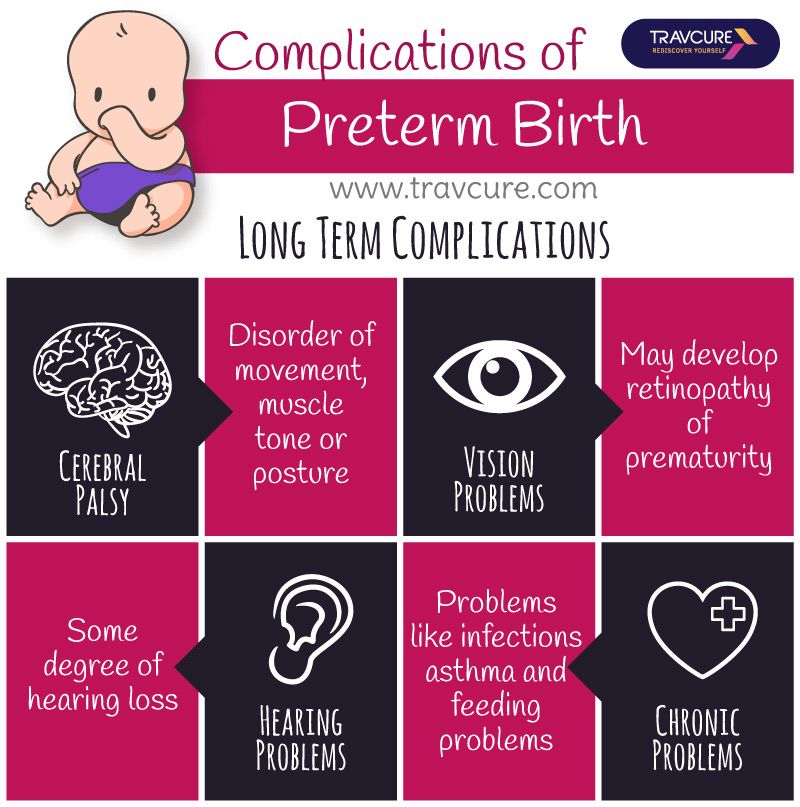
We offer you to consider all the options and stages of feeding in order to determine the most important factors for yourself. This way you will have a general idea of the whole process.
Breastfeeding and maternal diet
Proper nutrition for babies becomes the basis for growth and development. Breastfeeding refers to natural feeding options, because, depending on the needs of the baby, its composition may partially change and provide exactly the nutrients that are needed.
Doctors are still arguing about the need for lactation and the feeding period. However, most doctors agree that feeding up to two years of age may be acceptable. But in a particular situation, parents make their own decisions.
Breastfeeding up to 1 month of age is recommended because milk contains all the maternal antibodies that help the body resist infection. This becomes a kind of protection for the baby. How much food a newborn needs is an individual question, which is desirable to discuss with the pediatrician.
In the case when the mother works or has to be away often, you can express milk and use special bottles for feeding babies. The nutrition of a child from 0 to 1 year old should mainly consist of milk, but you need to take into account the basic rules:
- the regimen is established individually, if there are no medical indications - the child is applied to the breast when he wants to eat;
- nutrition of a newborn by months is built depending on the intensity of weight gain;
- the norm of food for a newborn is not specific - it is believed that the baby eats as much as he needs;
- gradually accustom the child to eating according to the schedule - every 3-4 hours;
- breastfeeding mothers should follow their diet and drink plenty of fluids.
As for the last point, here you also need to consider what mom eats. It is advisable to exclude smoked foods, spicy dishes, chocolate sweets, citrus fruits, soda and coffee from her menu.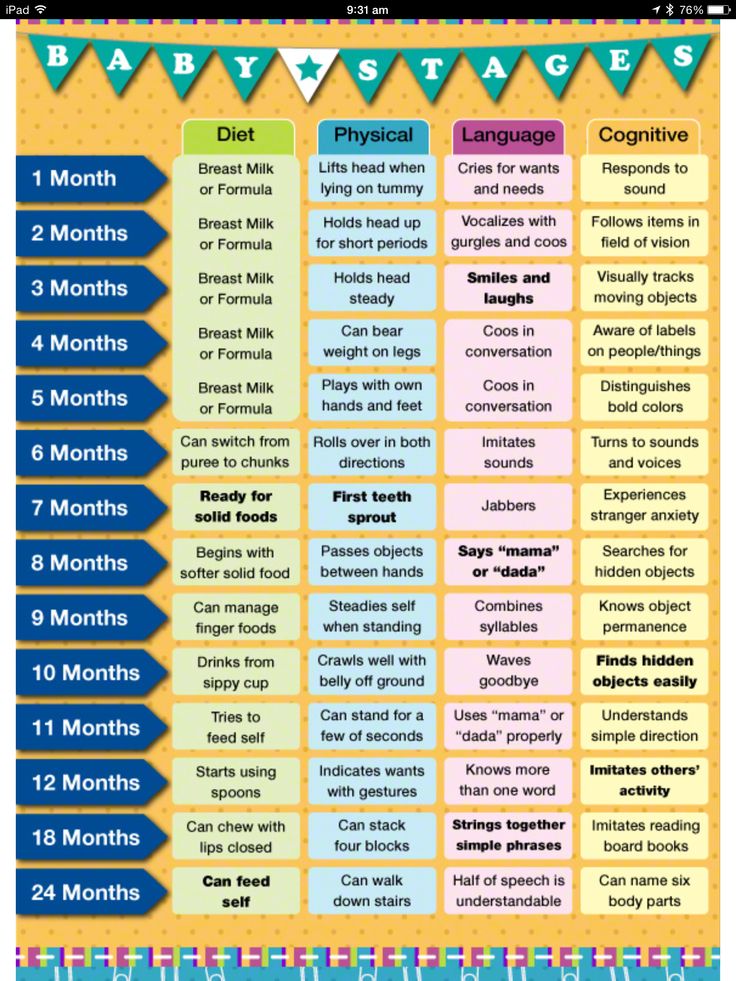 Sometimes you can use them, but in minimal amounts.
Sometimes you can use them, but in minimal amounts.
Mixed and artificial feeding
The diet of a child under 1 year of age may include a mixed type of feeding. This is an alternation in a certain proportion of feeding with mother's milk and mixtures. The minimum amount of natural milk in this type should be 50% of the total.
Mixed feeding for the newborn is usually chosen for low lactation. That is, the milk secreted by the mother cannot fully cover the baby's needs for nutrients. Mixtures in this case act as supplementary food.
Another method of feeding is full artificial feeding. Traditionally, it is used in the complete absence of lactation. Then special milk mixtures become a full-fledged replacement for breast milk. What kind of food is better to feed a newborn, it turns out in the process.
Blends are tailored and developed according to basic needs. So, food for children under 1 year old is saturated with the right amount of microelements and useful substances. But in this case, you need to immediately set the feeding regimen, since the mixture should be given at a specific time.
But in this case, you need to immediately set the feeding regimen, since the mixture should be given at a specific time.
How to organize the nutrition of children with formula feeding?
Depending on the age and weight of the child, the feeding schedule and the amount of formula consumed will change. The initial nutritional norms for a child under 1 year old approximately look like this:
- first week of life - feeding 7-10 times a day, volume 700 ml;
- up to 12 weeks - the nutrition of an infant at 3 months is reduced in meals up to 7-8 times, and the volume increases by 50 ml;
- to 16 weeks - the number of meals becomes 6-7, and the volume increases by another 50 ml.
Set the right temperature for the mixture. So, you can heat it up or cool it down. Newborn feeding accessories will help you calculate portions correctly.
Beginning complementary foods: what does Komarovsky say?
The well-known pediatrician Yevgeny Komarovsky partly goes against the established traditions of the people. So, while feeding a child (introducing products up to a year old), he suggests adhering to the following rules:
So, while feeding a child (introducing products up to a year old), he suggests adhering to the following rules:
- gradually introduce sour milk, and not vegetables at the beginning - this minimizes the risk of intestinal disorders;
- classic version - complementary foods after 6 months;
- time to experiment with new products (kefir) - from 9until 11 am;
- constantly need to monitor the reaction of the baby, his well-being;
- on the 4th day of feeding, cottage cheese is added;
- after a month of such a diet, you can add cereals (buckwheat, rice, oatmeal).
Komarovsky does not create tables for complementary foods, ideal proportions. He claims that here the diet of a child under 1 year old must be calculated based on individual characteristics and food preferences.
First semi-solid foods
Feeding a child under 1 year of age primarily involves the introduction of vegetables and fruits.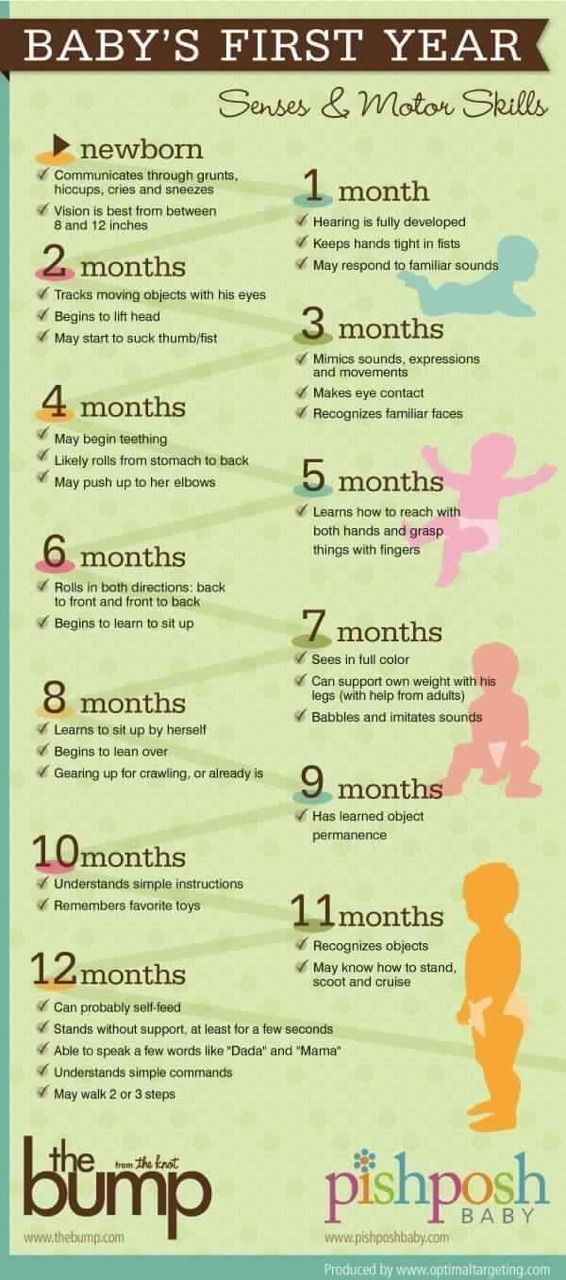 But they are given to children not in raw form, but after full processing. For example, it can be fruit purees and juices.
But they are given to children not in raw form, but after full processing. For example, it can be fruit purees and juices.
Choose them depending on the needs of the body. So, for overweight children, they offer to try carrot puree. You can buy them ready-made or cook them yourself.
Feeding from 17 to 24 weeks
Sometimes complementary foods start as early as the 17th week of life, that is, at 4 months. This is explained by the following reasons:0003
- underweight or overweight;
- bowel disorders;
- iron deficiency anemia.
The child's body may already be ready at this age to receive new food. But in classic situations, milk, mixtures, and a variant with mixed nutrition are currently used for food.
Complementary foods usually start when the baby can sit up quite independently. So for convenience, you should buy a highchair for feeding from birth, where it is convenient to feed the baby, as well as play educational games.
Feeding babies from 25 weeks of age
If complementary foods started from the 17th week and were normally perceived by the baby, then by six months the volume of one serving will be from 100 to 150 grams. If the introduction of new food is just starting from the 25th week, it is advisable to carry it out according to the plan already described.
For children who have been on artificial nutrition all the time, you need to constantly monitor the change of mixtures, since they are designed for a specific age. At the same time, it is not recommended to change the manufacturer in order to avoid intestinal upset.
After the 29th week, the introduction of multi-component vegetable and lean meat purees begins. Eating a baby at 7 months allows you not to bring food to a mushy state: just knead it with a fork. Slightly dried bread (fresh is still early) and butter are introduced immediately.
From the 33rd week, the introduction of food with a fish base begins. This is useful because from here the baby receives iodine and amino acids. But even here it is still impossible to use large pieces of food that can get into the respiratory tract.
Feeding from 37 weeks of age
Portions of cereals and fruits are increased to 180 grams. The size of the pieces is 1-2 cm. Food for babies up to a year gradually increases in portion sizes, but is not served in whole pieces.
From the age of ten months, the diet is quite rich, therefore it is desirable to draw up at least an approximate food schedule in order to saturate the body with various substances equally useful. You can diversify fermented milk products with cottage cheese casserole.
The baby's diet per year is already quite large. There are potatoes, an egg, steam cutlets, cookies, compote and weak tea. It is advisable to interest the child in new food, and not force them. For example, you can serve it on a plate in an intricate shape or teach it to eat on its own - your own spoon in your hands can help with this.
It is undesirable to mix food and watching cartoons. This can stretch the meal, worsen the appetite due to more important things for the baby. At the age of 1, food culture habits are formed, so here you need to introduce healthy food and teach the child to do this. Tarkvanem For the first 6 months, the best (and if possible the only) food for an infant is breast milk.
Breastfeeding brings great benefits to both mother and baby.
Breastfeeding is important for a baby because:
- provides energy and essential nutrients
- protects against diseases and infections
- helps develop the digestive tract
- provides a sense of security
- in later life reduces the risk of being overweight
- reduces the risk of sudden infant death syndrome
- supports normal mental development
Breastfeeding is important for a mother because:
- strengthens the bond between mother and child
- helps to recover faster after childbirth
- helps restore prenatal body weight
- reduces the risk of ovarian and breast cancer
- reduces the risk of osteoporosis
What do you need to know about breast milk and breastfeeding?
- Breast milk promotes the development of the newborn's digestive system, helping her to prepare for the transition to regular food.

- In the first six months of life, the first and, at best, the only food is breast milk, the composition of which is well optimized, since it provides the necessary energy and contains all the compounds necessary for growth and development.
- A breastfed and well-weighted 6-month-old infant does not require supplemental feeding.
- During the first four months, the baby should not be given anything other than breast milk, because other foods during this period may interfere with the development of the digestive tract.
- Under no circumstances should a child be given starchy foods (cereals, potatoes) until the child is three months old, because he cannot digest them.
- As long as the baby receives breast milk, he does not even need to give additional water, because he receives both liquid and nutrition from breast milk.
Composition of breast milk
- The composition of breast milk changes constantly throughout the day.
 For example, at night, milk is denser and more nutritious, it allows you to make longer pauses between feedings.
For example, at night, milk is denser and more nutritious, it allows you to make longer pauses between feedings. - At the beginning of feeding, the milk is more watery (called foremilk), it quenches the baby's first thirst. At this time, the baby sucks with great appetite.
- When all the foremilk has been drunk, sucking slows down, the milk becomes thicker, and the content of fat and other nutrients is higher. This milk is called hindmilk.
- Make sure the baby is emptying the breast properly so that he will receive nourishing hindmilk at the end of the feed. First let the child completely finish one breast and then, if necessary, offer him another.
- Start each subsequent feeding on the other breast.
How often should I feed my baby?
- The infant must receive food as desired. In the first months of life, approximately every 2-3 hours (if necessary and more often), as the child grows, every 3-4 hours.
- Some children eat worse, may take too long breaks.







